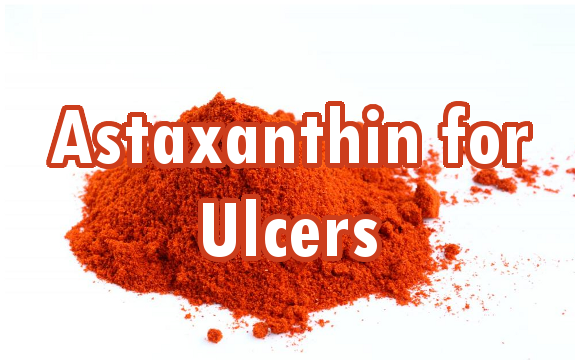Antioxidant Astaxanthin Found to Fight and Protect Against Stomach Ulcers


Ever wonder why salmon looks pink on your plate? It’s due to something called astaxanthin, and it’s the same reason lobster, shrimp, and crab have pink flesh. Astaxanthin is a powerful antioxidant that comes from a diet rich in an algae known as H. pluvialis, and it could have significant benefits for stomach health.
Haematococcus pluvialis (H. pluvialis) is a microalgae. When this algae runs out of water, astaxanthin is produced in an effort to protect itself from UV radiation. Astaxanthin’s protective qualities come from the fact that it is a powerful antioxidant—65 times more powerful than vitamin C!
Like all antioxidants, astaxanthin scavenges free radicals. This means it protects the body’s cells from oxidative stress, reducing DNA damage from UV radiation and more.
One study published in the European Journal of Pharmacology indicates the properties of astaxanthin could help treat stomach ulcers, good news for people who suffer from this painful condition.
The researchers looked at how administration of the antioxidant affected rats at concentrations of 100, 250, and 500 microg/kg. After they were given carotenoid and astaxanthin esters orally, the rats were fed ethanol to induce gastric ulcers. The rats fed the highest dose (500 mg/kg) of astaxanthin did not develop ulcers.
Read: 7 Ways to Stop Aging in its Tracks
Moreover, astaxanthin ester pretreatment significantly raised antioxidant enzyme levels in the stomach, including superoxide dismutase, catalase and glutathione peroxidase. Histopathological examination confirmed the results, showing how astaxanthin regulates gastric acid secretion.
The researchers noted that the lipoxygenase inhibition in the rats’ cells were 23 times greater when astaxanthin was given, compared to administrations of a common proton pump blocking anti-ulcer drug called omeprazole.
The study concluded that the powerful antioxidant benefits of astaxanthin were able to successfully protect against the injury of gastric mucin, a large glycoprotein that protects the stomach from acid, pathogens, and trauma. Thus, the algae-derived compound is able to protect against ulcers.
Because seafood like lobster, shrimp, salmon, and crab feed on the source of astaxanthin (H. pluvialis), they remain the best source of the antioxidant currently on the market.
It’s even been suggested that astaxanthin is so readily available in the muscles of salmon that it’s the reason they are able to swim upstream for such long periods. For now, though, you may want to look for high-quality astaxanthin supplement, as seafood is less-than-desirable due to pollution and radiation in the oceans.

Of all the vitamins I take, I consider astaxanthin to be the most important. I take and give it to my elderly dog for arthritis. It is amazing. It should be taken with krill or another omega 3, however.
Dr Mercola introduced me to astaxanthin a couple of years ago as his research has been fairly extensive.
Another quick note, I have fibromyalgia and astaxanthin keeps it non-symptomatic. It also keeps lyme-disease non-symptomatic.
Thank you for this report, I had not considered it was also good for my belly!
actually salmon does not naturally look pink, that is apart of additives added to give the enhancement. For any of us who have the opportunity to catch fresh salmon, especially Pacific salmon, we will notice that the bright coloration we see in the salmon is absent. That aside very informative article and appreciate the information give on this report. 🙂